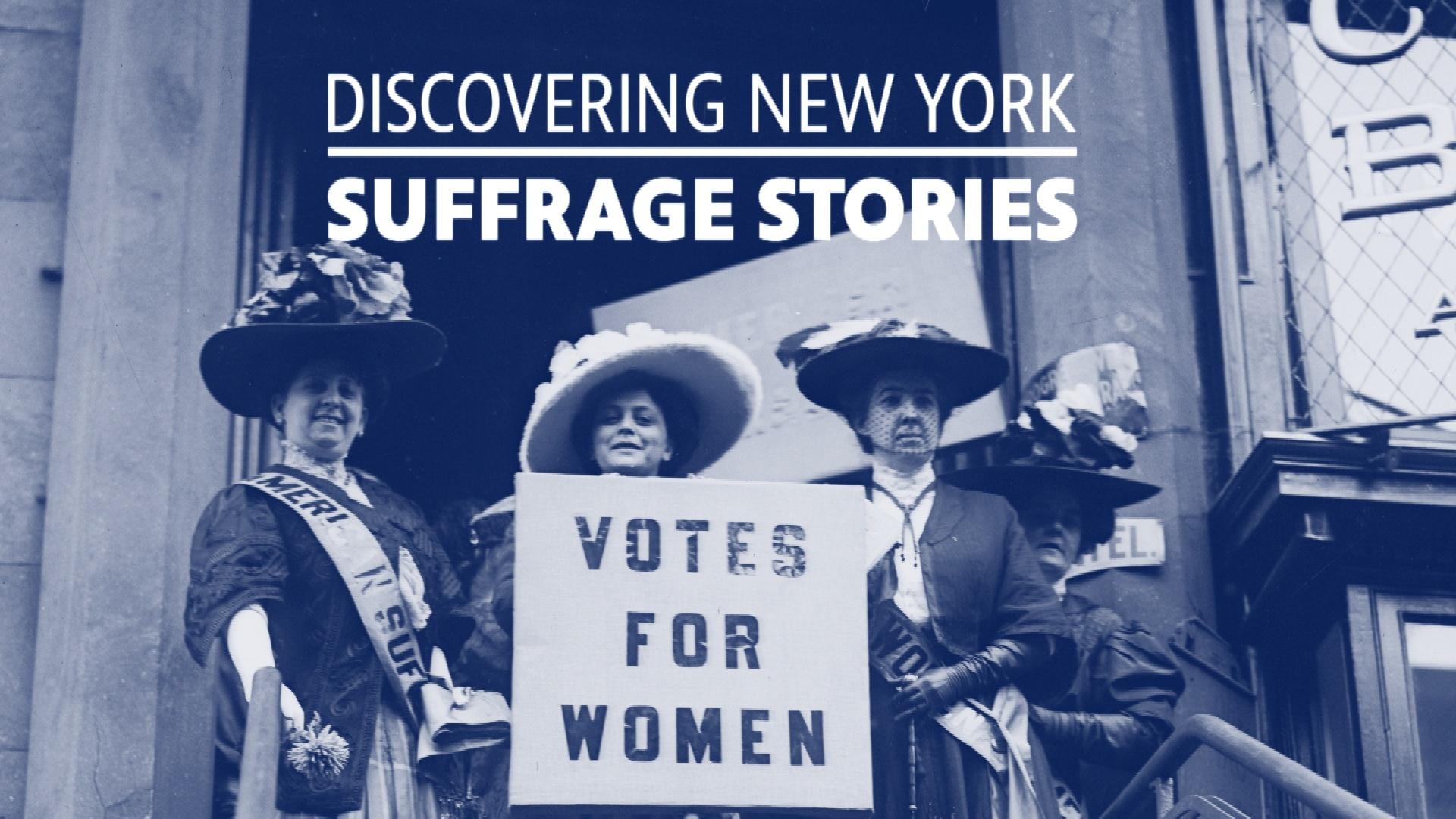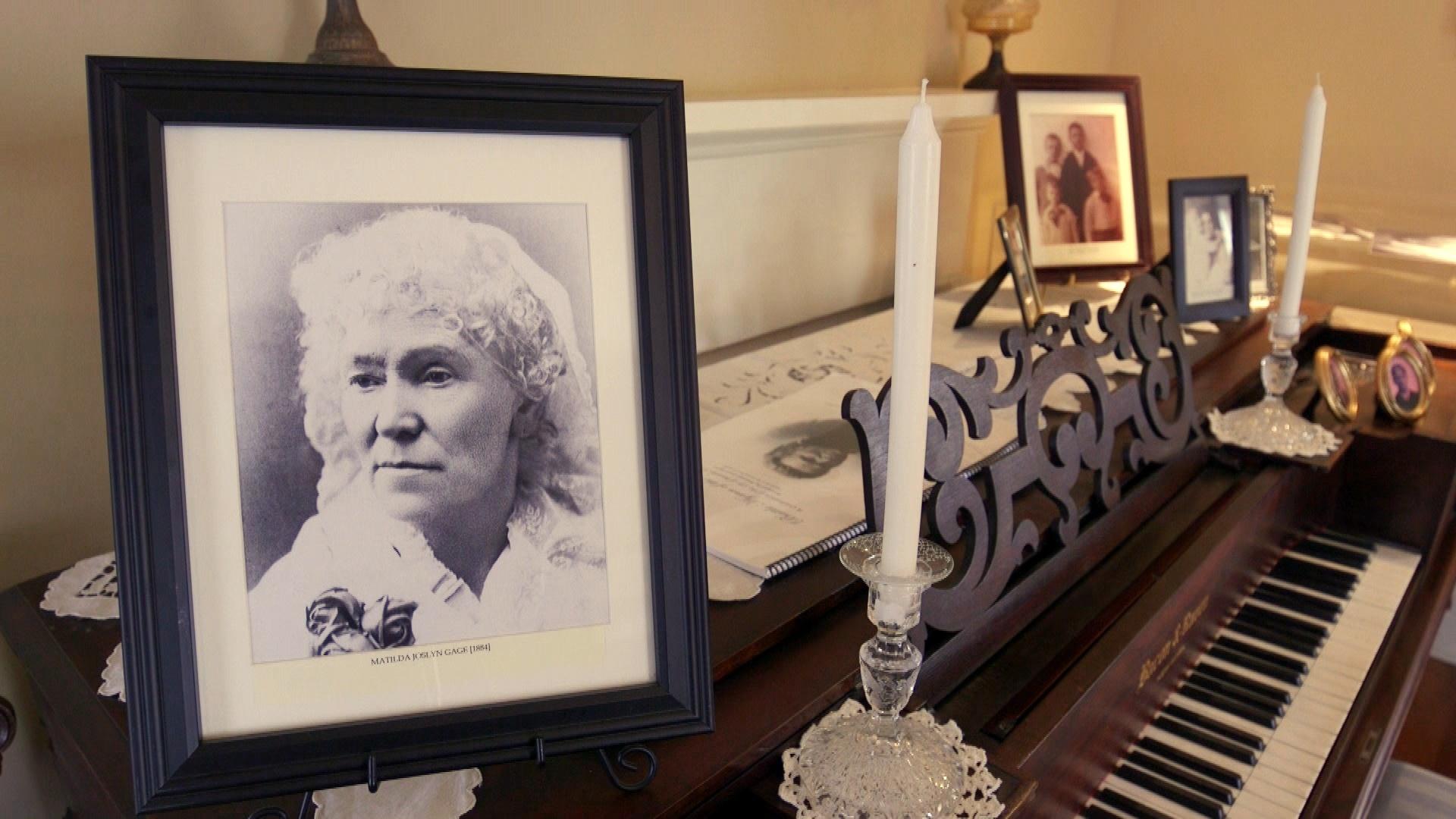
Haudenosaunee Influence on the Suffrage Movement
Grades 4 - 8
2- 3 Class Periods
Program Segments
- Introduction (approximately 5 minutes)
- Matilda Joslyn Gage (approximately 5 minutes)
Discover the history of women’s suffrage, and how New York played a critical role.


Objectives
Students will be able to:
- Demonstrate an understanding of suffrage.
- Understand the influence Haudenosaunee women had on the suffrage movement.
- Interpret some of Matilda Joslyn Gage’s quotes.
Instructional Resources
- “Discovering New York Suffrage Stories”
- Computer, Whiteboard
- Map of Haudenosaunee original lands
- Concept Map of the Indigenous and Haudenosaunee Worksheet
- Concept Map of the Indigenous and Haudenosaunee Answer Key
- Roles of Women Chart
- Gage Quote Interpretation Worksheet
Procedures
CLASS PERIOD 1
- The teacher will initiate a discussion related to the suffrage movement. Questions to prompt students are:
- “Have you ever voted for anything?” Wait for student responses.
- “Have you participated in surveys, polls…?” Wait for student responses.
- The teacher will say, "We will be learning about the women's suffrage movement and the influence that Haudenosaunee women had on it."
- The teacher should then ask, “Who can tell me what suffrage means?," wait for possible responses and then share "Suffrage means the right of voting."
- Students will watch the Introduction video from “Discovering New York Suffrage Stories” which explains a bit about the Women's Suffrage Movement.
- Activating prior knowledge of key vocabulary words Indigenousand Haudenosaunee, the teacher will ask, “Who can tell me what the word Indigenousmeans?” Wait for student responses. Then ask, “Who are the Haudenosaunee?” Wait for student responses.
- The teacher will explain the definition of Indigenous and explain the relationship between the words Haudenosaunee and indigenous.
- Indigenous - living, or occurring natively or naturally in a particular region
- Haudenosaunee - From Seneca hotínöhsö:ni:h, meaning house builders, the Iroquois confederacy
- The teacher will show a map of the original Haudenosaunee land holdings and explain the Haudenosaunee’s six distinct nations: the Seneca, Cayuga, Oneida, Onondaga, Mohawk, and later joined by the Tuscarora.
- Next, the teacher will show students, explain how to complete, and then distribute the Concept Map of the Indigenous and Haudenosaunee Worksheet. The teacher will assist the students in completing the worksheet.
- The students will watch the Matilda Joslyn Gage video segment.
CLASS PERIOD 2
- The teacher will remind the students what they already learned about the Women's Suffrage Movement, the Haudenosaunee, and Matilda Joslyn Gage.
- The students will be asked to think about the roles of women in different groups - Haudenosaunee, Black American, and White American.
- The teacher will distribute and explain how to complete the Roles of Women Chart.
- When the charts are complete, the teacher should ask, "How have these roles changed today? Have they changed much or not at all?" The teacher can take notes on the board during the class discussion.
- After the class discussion, students should write a 1-2 paragraph response using examples from the video, completed chart, and class discussion to support their answers. Guiding questions are:
- How did the Haudenosaunee women influence the Suffrage Movement?
- What about the Haudenosaunee women lifestyle and freedom influenced the suffragists?
- How would seeing Haudenosaunee women in their roles make Gage and the other suffragists demand their right to vote?
- Students will be asked to recall the video segment on Matilda Joslyn Gage.
- The teacher will share the Gage Quote Interpretation Worksheet.
- The teacher will interpret one of the quotes with the students to demonstrate how they might complete the worksheet.
- Students will finish the worksheet by analyzing the remaining quotes and writing their thoughts to the prompts on the Gage Quote Interpretation Worksheet.
Assessment Tasks
- Students will participate in class discussions.
- Students will turn in a completed Concept Map of the Indigenous and Haudenosaunee Worksheet.
- Students will turn in a completed Roles of Women Chart.
- Students will turn in 1-2 paragraphs written about the Haudenosaunee influence on the Women's Suffrage Movement.
- Students will turn in a completed Matilda Joslyn Gage Quote Interpretation Worksheet.
Adaptations for Grades 9-12
- Students could write a more detailed and thorough comparison, in 1-2 pages, of the Women's Suffrage Movement and the Black Lives Matter Movement. Research could be done on current protests and advocacy movements.
Extension Activities (optional)
Map activities:
- Have students Google the areas in New York State that Gage lived in and label them on a map.
- Have students search for and label reservations of the Haudenosaunee in New York State.
- Have students measure the miles from where Gage lived in relation to the Haudenosaunee women.
- Have students think about how proximity may have influenced Gage.
- Have students look up the Nomination Belt (Wampum Belt) which gives the clan mothers the right to name and dehorn sachems/chiefs.
- Follow-up with a discussion around empowering women and role in society.
New York State Learning Standards for Social Studies
Unifying Themes: Individual Development and Cultural Identity; Time, Continuity, and Change; Development and Transformation of Social Structures; Power, Authority, and Governance; Civic Ideals and Practices
- Standard 1—History of the United States and New York
- Standard 5—Civics, Citizenship, and Government

Major support for Discovering New York Suffrage Stories was provided by The National Endowment for the Humanities: Exploring the Human Endeavor, by the Susan Howarth Foundation, and KeyBank in partnership with First Niagara Foundation. With additional funding from the Fred L. Emerson Foundation and Humanities New York.